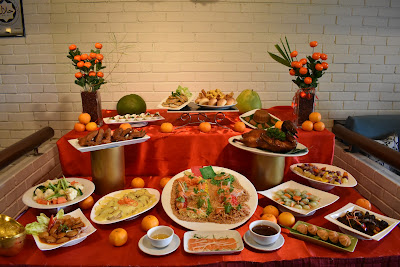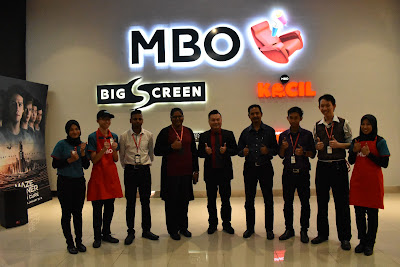THE BEST OF PORTUGAL AND SPAIN (PART 1)
The Best of Portugal and Spain
– the writer gets to experience for herself the best of both neighboring
countries and concluded the two sisterly countries are equally beautiful ‘in its
own ways’.
Going
to Spain without Portugal is like going fishing without a fishing rod.
The
two ‘sisterly’ countries of the Southern European continent are inseparable.
The
elder sister Spain is a more popular tourist destination compared to the laidback
Portugal, which is well known for generating footballers for the World Cup
Matches.
Nevertheless,
the ‘two’ countries have me wandering if I sign up for one without the other, I
will regret.
Without
second thought, I purchased a one-week travel package covering Spain
(Barcelona) and Portugal (Lisbon) to experience for myself who is the ‘better’
sister between the two.
 |
| PORTUGAL, LISBON |
LISBON
Portugal,
is one of the less travelled European countries compared to her counterparts in
the southern continents namely Spain, Italy, Greece and the Mediterranean.
I
do not know ‘why’ she is not a hit among tourists, and I choose ‘her’ because I
want to let the world know they may be wrong for not including her into the
Europe travel list.
No
doubt, I have little knowledge about Portugal
except gathering some facts from school history books on the Malacca sultanate,
as well as the existence of the Portuguese community living in Malacca, I am
positive I will get close to her on my three-day-two-night in Lisbon.
My
first day in Lisbon is quite disappointing as I have to endure with the heavy
rain pour. It must be a ‘shower of blessing’ as Lisbon is one of the pilgrimage
place for the Christians.
Upon
checking into Hotel Travel Park located in the Angel Neighborhood, I waste no
time to book for a day tour package via the receptionist.
The
pleasant receptionist then recommended the “Lisbon City Tour” which is supposed
to be one of the more popular tours for first timer, to this historic city.
Since
my days are limited to only two full days in Portugal, I followed her advice
and sign up for the city tour instead of the outskirts tours such as the Castle
Tour or the Fatima Tour.
According
to a Portugal Tourist Guidebook (published by NewJamp) Portugal is one of the
most beautiful cities in Europe and a first class trans-oceanic port.
It
stretches along the northern length of the banks of River Tejo estuary
occupying seven hills.
Lisbon
is not like any ordinary European cities, as the town is on the low part of
these seven hills that surround the city.
Thus,
I fall in love with Lisbon at first sight for its beautifully decorated
gardens, landscapes, sculptures and Squares steeped in history, occupying every
corner of the city.
 |
| BIRD'S VIEW OF PORTUGAL |
LISBON CITY TRAIL
Next
day, we excitedly waited for the arrival of our tour guide who arrived
punctually at 9am, at our hotel. Our group was a small one comprising of an
American tourist, my mother and myself. We are chauffeured by our English
speaking guide Alex in a van, and we are told that the city tour will take us to
see the charming sight of Lisbon city, monuments and statues.
To
start off, the guide drive through some interesting places in city centre for
us to catch a glimpse of the historic places namely Marques de Pombal, Av. Da
Liberdade, Rossio, Alfama, Palimento and Pantea Nacional.
The
first stop is none other than to view the first-ever cathedral in Lisbon
erected with French Romanic shapes during the XII century called the Catedral
Igreja St Antonio.
The
awesome church now serves as the Cathedral of Lisbon and the headquarters of
Cardinal patriarch of the City.
 |
| CATEDRAL IGREJA ST ANTONIO |
Moving
on is one of the ‘must’ go places in the city located at the highest point in
Lisbon called Miradoro da Nossa Senhora do Monte whereby one can have a
breathtaking view of the city.
 |
| MIRADORO DA NOSSA SENHORA DO MONTE |
Here,
I am amaze with the sightings of the buildings, castles, gardens, and even the
faraway Salazar Bridge.
The
Salazar Bridge (also known as 25th April Bridge) was constructed of
steel runs two kilometers and sits on two great pillars above River Tejo, which
was opened to the public in 1966.
The
bridge is a replica of the San Francisco’s Golden Gate, and is one of the two
bridges in the city with the other one called Vasco Da Gama.
A
major landmark of the city is none other than the World Heritage Site Torre de
Belem (Belem Tower), which is a masterpiece in the Manueline style and is a
symbol of the city.
 |
| TORRE DE BELEM (BELEM TOWER) |
King
Manuel commanded its construction and it was built in the River Tejo between
1515 and 1521. The structure of the building is Romanic-Gothic, incorporating
Arabic decoration which gives it an exotic and attractive aspect.
Nearby,
is the Padrao dos Descobrimentos (Monument of Discoveries) an imposing
architectural built in 1960 in commemoration of the 500th
anniversary of the death of Henrique O Navegante. This impressive monument is
dedicated to the maritime discoveries and sailing companies that have given
such fame to Portugal.
Every
tourist (including me) will definitely walk up to the upper terrace and
contemplate the River Tejo, Salazar Bridge and the Monastery, from where the
large compass which presides over the square sits.
Across
the road stands the majestic Mosteiro Dos Jeronimos (Heironnomytes Monastery)
which is one of the most important monuments in the city, an additional
masterpiece of Manueline works, also founded in 1506 by King Manuel.
 |
| MOSTEIRO DOS JERONIMOS |
Thousands
of visitors throng this monastery weekly to take photographs with this
enchanting building showcasing Renaissance style decoration, and a series of
magnificent pillars covered with ornamental statues separate with three naves
of the temple.
Another
great place of visit is the Praca Do Commercio which forms the largest of the
squares in the Portuguese capital, which house the headquarters of various
ministries and government offices and also serves as a tourist attraction.
 |
| PRACA DO COM,MERCIO |
At
the square, one can view the Triumphal Arch coupled with the four statues
representing Viriato, Nuno Alvares, Pombal and Vasco da Gama.
The
centre of the square is presided over by the elegant Equestrian Monument of
King Jose 1, and a set of steps called Cais das Colunas, goes down to the Tejo.
However,
one must not leave Lisbon before tasting its Portuguese egg tarts offered at an
old timer shop named Pasteis de Belem. The tarts were first made by monks as
the monastery was near a sugar refinery, where they (monks) came up with the
idea of combining the yolks with sugar.
 |
| PORTUGAL TART |
TRAM RIDE
On
my last day, I managed to squeeze into a sandwich city tram for a joy ride to a
beautiful ancient Moorish neighborhood called Alfama, to see the XVI century houses,
alleys and steps and the livelihood of the people.
My
only regret is that I am not able to make it to the sanctuary of Fatima, where
thousands of people make a pilgrimage to Fatima to commemorate the apparition
of the Virgin to the three young shepherds on May 13 and October 13, annually.
The Fatima church is located about four hours from the city.
 |
| TRAM BY - PASSING CITY |

















































